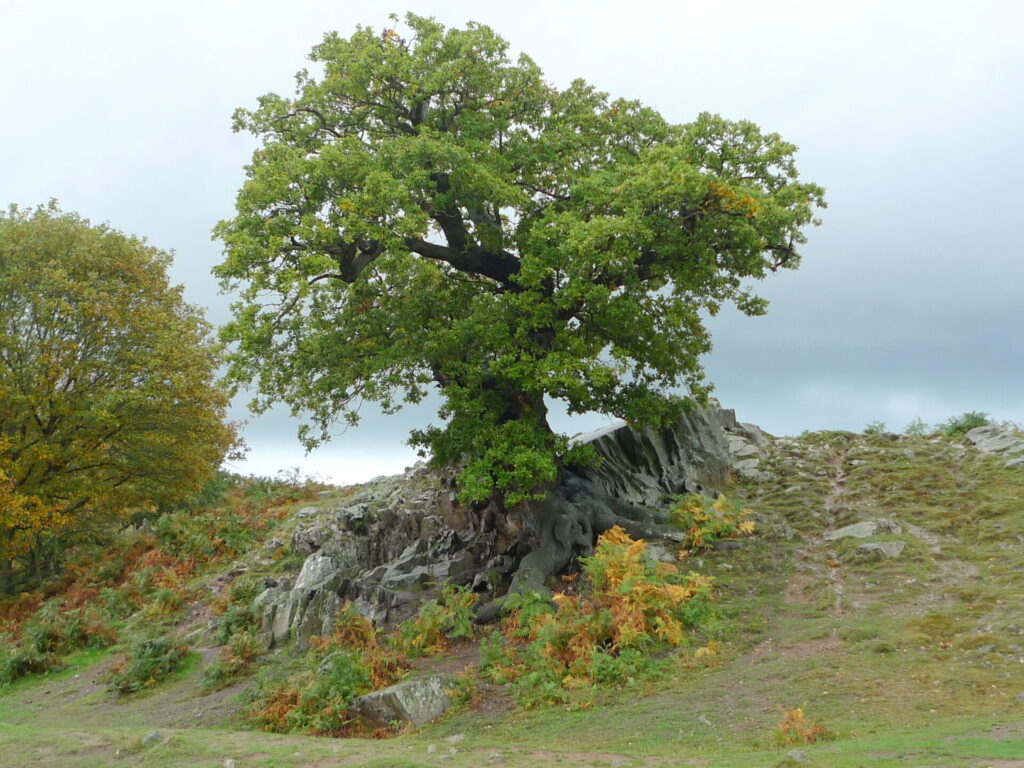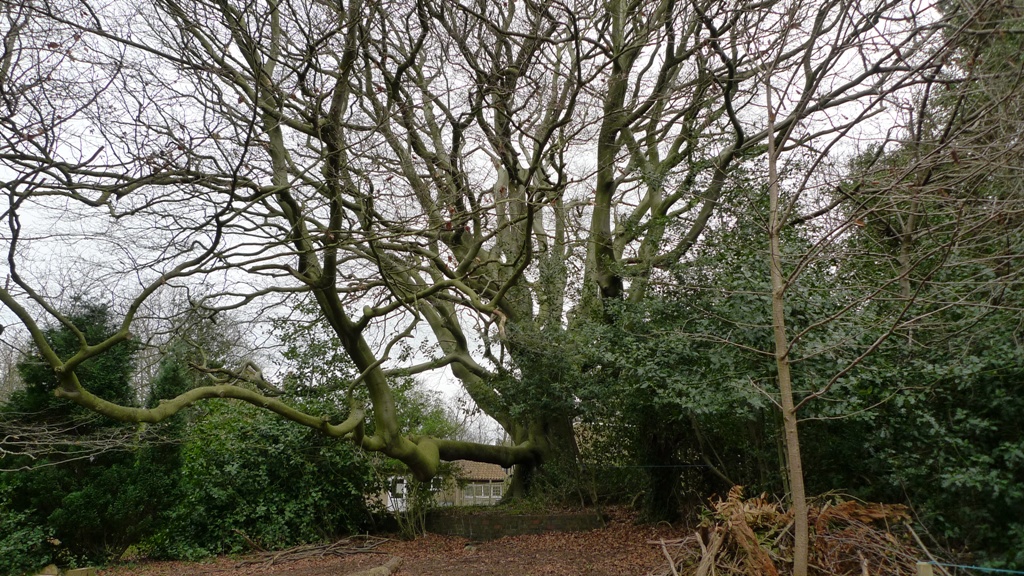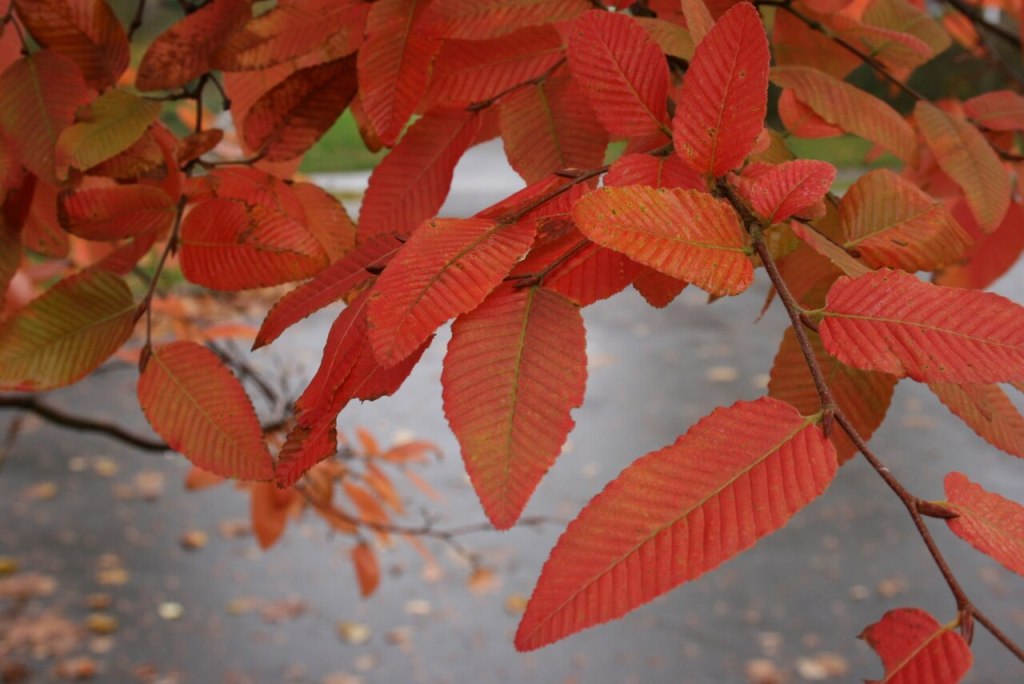
The Fagaceae is an all ‘woody’ family and an important economical crop as well as that it is an ornamental and ecological very useful family.
More about all the uses of each genera and species occuring in the wild in the B.I.
See the links for more details. All pictures except if stated by Mike Poulton. FBBC behind the name in the contents means the tree occurs in the Birmingham and the Black Country!
Contents:
Fagus sylvatica or Beech FBBC
Nothofagus spp.
- N. alpina or Rauli
- N. obliqua or Roble FBBC
- N. × dodecaphleps (Nothofagus obliqua × alpina)
Quercus spp. or Oak
Q. robur or Pedunculate Oak FBBC
Q. petraea or Sessile Oak FBBC
Q. × rosacea (Quercus petraea × robur) or Hybrid Oak FBBC
Neophytes or introduced oaks are:
- Q . canariensis or Algerian Oak
- Q. cerris or Turkey Oak FBBC
- Q. cerris x Q. robur FBBC
- Q. × crenata (Q. cerris × suber) or Lucombe Oak FBBC
- Q. coccinea or Scarlet Oak
- Q. ilex or Evergreen Oak FBBC
- Q. rubra or Red Oak FBBC
Castanea sativa or Sweet Chestnut FBBC
An archaeophyte in Britain and the Channel Islands and a neophyte in Ireland.

Two examples of use for beech: as a solitary tree above and in woodland below (both pictures by Mike Poulton)

Fagus sylvatica or Beech
A large tree found on a wide variety of base-rich to acidic, free-draining soils. It grows in pure woodlands or as standard trees or pollards in wood pasture. It is widely planted outside its native range as woodland, in avenues and as hedges.
The beech is a very popular ornamental tree in parks and large gardens in temperate regions of the world.
The following cultivars have gained the Royal Horticultural Society‘s Award of Garden Merit:
- F. sylvatica
- ‘Dawyck’
- ‘Dawyck Gold’
- ‘Dawyck Purple’
- ‘Pendula’ (weeping beech)
- ‘Riversii’
- F. sylvatica var. heterophylla ‘Aspleniifolia’
The nuts are eaten by humans and animals. Slightly toxic to humans if eaten in large quantities due to the tannins and alkaloids they contain, the nuts were nonetheless pressed to obtain an oil in 19th-century England that was used for cooking and in lamps. They were also ground to make flour, which could be eaten after the tannins were leached out by soaking.
- Its fine and short grain makes it an easy wood to work with, easy to soak, dye, varnish and glue. Steaming makes the wood even easier to machine.
- It has an excellent finish and is resistant to compression and splitting and it is stiff when flexed.
- It is particularly well suited for minor carpentry, particularly furniture. From chairs to parquetry (flooring) and staircases, the European beech can do almost anything other than heavy structural support, so long as it is not left outdoors.
- Its hardness make it ideal for making wooden mallets and workbench tops.
- It is better for paper pulp than many other broadleaved trees though is only sometimes used for this, the high cellulose content can also be spun into modal, which is used as a textile akin to cotton.
- Common beech is also considered one of the best firewoods for fireplaces
Other genera and species:
Nothofagus spp.
Nothofagus, also known as the southern beeches, is a genus of 43 species of trees and shrubs native to the Southern Hemisphere in southern South America (Chile, Argentina) and east and southeast Australia, New Zealand, New Guinea, and New Caledonia.
There are 2 known species and 1 hybrid in the B.I.:

N. alpina or Rauli
A deciduous tree, widely planted as a specimen tree in parks, amenity areas and large gardens and as a forestry tree in pure and mixed plantations. It grows on a wide range of soils, and seems to do particularly well in areas of high rainfall. It produces abundant seed and regenerates freely at many of its sites in our area.

N. obliqua or Roble
A deciduous hardwood tree, widely grown as a specimen tree in parks, arboreta, amenity areas and large gardens and sometimes as a hedging plant and a commercial tree in pure or mixed plantations. It grows well on a wide range of soils, except over chalk, setting abundant seed and regenerating freely.
The hybrid is:
- N. × dodecaphleps (Nothofagus obliqua × alpina)
Quercus spp. or Oak

Q. robur or Pedunculate Oak: Flowers at Sot’s hole above (by M. Poulton) Acorns below (by Rudi Pinsell)

Q. robur or Pedunculate Oak or click here
A long-lived, deciduous tree of high forest, coppice woodland and ancient wood-pasture. It grows on a wide range of soils, typically those which are heavy and fertile, but does not thrive on thin soils over limestone or acidic peat. It is fairly tolerant of waterlogging, growing at fen margins and in Alnus glutinosa woodland, and is very widely planted in hedges and woodland.

Q. petraea or Sessile Oak
A long-lived, deciduous tree, forming high forest or coppice woodland, especially on well-drained, shallow, moderately to strongly acidic soils. It is the characteristic species of upland oakwoods. Seedlings may be more shade-tolerant than those of Q. robur and would therefore be more able to regenerate in woodland. Q. petraea displays high levels of morphological variability (Kelleher et al., 2004), and differences between it and Q. robur when examining material in the field are not always clear-cut.

Q. × rosacea (Quercus petraea × robur) or Hybrid Oak
A large deciduous tree, potentially found wherever the parents meet and sometimes occurring in the absence of the less frequent Q. petraea. It may be present as pure stands, as in some steep coastal river valleys, or as individual trees.
Neophytes or introduced are:

- Q. cerris or Turkey Oak
- Q. × crenata (Q. cerris × suber) or Lucombe Oak
- Q. coccinea or Scarlet Oak


Castanea sativa or Sweet Chestnut in winter and summer at Sandwell Valley.

Castanea sativa or Sweet Chestnut or click here
An archaeophyte in Britain and the Channel Islands and a neophyte in Ireland.
This deciduous tree is a major constituent of coppiced woodland in south-east England. It is also planted as an ornamental in hedgerows, wood-borders, parkland and amenity areas, and in large gardens. It tolerates a wide range of soils, but thrives on moist, sandy soils. Seed is set freely in the south, but seedlings only rarely reach maturity.
Cultivation forms:
Three different cultivation systems for the sweet chestnut can be distinguished:
- Coppicing: Mainly for wood extraction. Standard conditions yield 15 m3 wood per ha and year.
- Selve or Chestnut Orchard: Fruit production from grafted trees. The trees have a short trunk and a big crown. Trees have a high density and the ground between the trees is often used as pasture.
- High forest: Wood and fruit production. This cultivation form is less intensive with a yield of 4–12 dt/ha and replacement of trees every 50–80 years. The trees grow from seeds and build a dense canopy.
A tree grown from seed may take 20 years or more before it bears fruits, but a grafted cultivar such as ‘Marron de Lyon’ or ‘Paragon’ may start production within five years of being planted. Both cultivars bear fruits with a single large kernel, rather than the usual two to four smaller kernels.
The species is widely cultivated for its edible seeds (also called nuts) and for its wood.
The Sweet Chestnuts are very much used in Tuscany, Italy in all its forms! My friend made a thick biscuit with the flour mixed with pear or apple.
Chestnuts are traditionally roasted in their tough brown husks after removing the spiny cupules in which they grow on the tree, the husks being peeled off and discarded and the hot chestnuts dipped in salt before eating them. Roast chestnuts are traditionally sold in streets, markets and fairs by street vendors with mobile or static braziers.
The skin of raw peeled chestnuts can be relatively easily removed by quickly blanching the nuts after scoring them by a cross slit at the tufted end. Once cooked, chestnuts acquire a sweet flavor and a floury texture similar to the sweet potato. The cooked nuts can be used for stuffing poultry, as a vegetable or in nut roasts. They can also be used in confections, puddings, desserts and cakes. They are used for flour, bread making, a cereal substitute, coffee substitute, a thickener in soups and other cookery uses, as well as for fattening stock. A sugar can be extracted from them.
The Corsican variety of polenta (called pulenta) is made with sweet chestnut flour. A local variety of Corsican beer also uses chestnuts. The product is sold as a sweetened paste mixed with vanilla, crème de marrons , sweetened or unsweetened as chestnut purée or purée de marron, and candied chestnuts as marrons glacés. In Switzerland, it is often served as Vermicelles.
Roman soldiers were given chestnut porridge before going into battle.
Sweet chestnut has been listed as one of the 38 substances used to prepare Bach flower remedies, a kind of alternative medicine promoted for its supposed effect on health:
Used to Treat: Anguish; those at the end of their endurance.
Encourages: Optimism and peace of mind. |
Leaf infusions are used in respiratory diseases and are a popular remedy for whooping cough.
A hair shampoo can be made from infusing leaves and fruit husks.
The ornamental cultivar C. sativa ‘Albomarginata’ has gained the Royal Horticultural Society’s Award of Garden Merit.
This tree responds very well to coppicing, which is still practised in Britain, and produces a good crop of tannin-rich wood every 12 to 30 years, depending on intended use and local growth rate. The tannin renders the young growing wood durable and weather resistant for outdoor use, thus suitable for posts, fencing or stakes.
The wood is of light colour, hard and strong. It is used to make furniture, barrels (sometimes used to age balsamic vinegar), and roof beams notably in southern Europe (for example in houses of the Alpujarra, Spain, in southern France and elsewhere).
The timber has a density of 560 kg per cubic meter, and due to its durability in ground contact is often used for external purposes such as fencing. It is also a good fuel, though not favoured for open fires as it tends to spit
